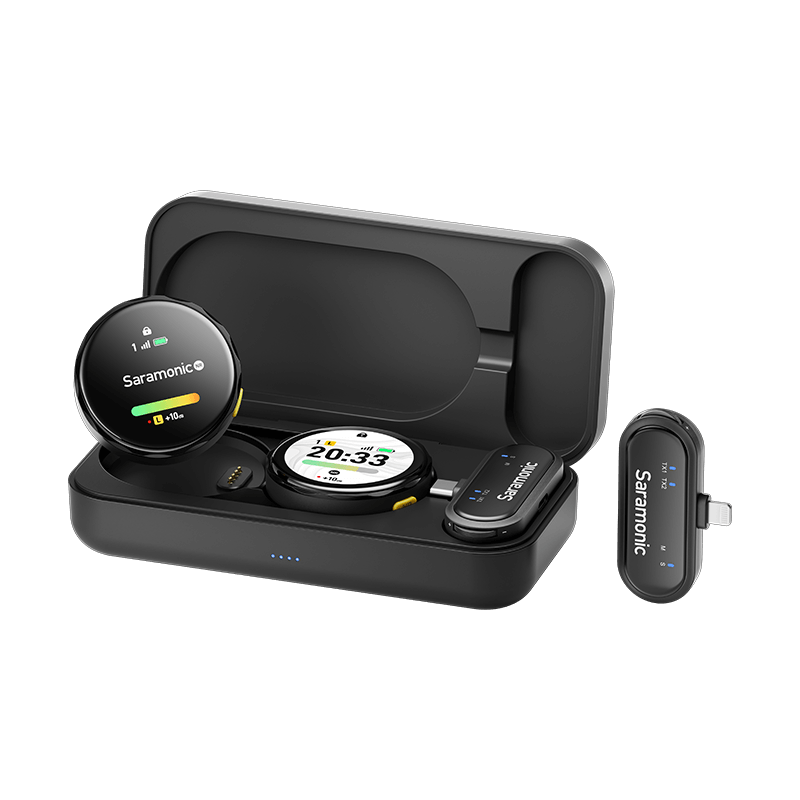Unlock Crystal Clear Sound: The Magic of Mini Wireless Microphones Revealed!
In today's fast-paced world, the demand for high-quality audio has surged, leading to the increased popularity of mini wireless microphones. These compact devices have become essential tools across various fields, including broadcasting, content creation, and public speaking. Imagine a content creator seamlessly capturing their voice while moving through a crowd or a speaker addressing an audience without the hindrance of bulky equipment. Mini wireless microphones have revolutionized the way we think about sound quality, providing an enhanced audio experience that was once only available with traditional, cumbersome microphones.

Sound quality is paramount in any audio-related endeavor, whether it's a YouTube video, a podcast, or a live performance. Mini wireless microphones not only deliver crystal-clear audio but also allow users to maintain a professional appearance without the clutter of wires. As we delve deeper into the world of mini wireless microphones, you'll discover their features, benefits, and best practices for use, ensuring you can make the most of these remarkable devices.
Understanding Mini Wireless Microphones
Mini wireless microphones are compact audio devices that transmit sound wirelessly to a receiver. Unlike traditional wired microphones, which limit mobility, these mini versions provide users with the freedom to move around while maintaining a clear audio signal. The basic components of a mini wireless microphone include the microphone itself, a transmitter that sends the audio signal, and a receiver that captures the signal and relays it to a sound system or recording device.
There are several types of mini wireless microphones available, each designed for specific applications. Lavalier microphones, often referred to as lapel mics, are small and can be clipped to clothing, making them ideal for interviews and presentations. Handheld microphones are versatile and commonly used in performances and public speaking events. Additionally, there are headset microphones that provide a secure fit, allowing users to keep their hands free, which is particularly useful for performers and fitness instructors. Understanding the different types of mini wireless microphones can help you choose the right one for your needs.
Features of Mini Wireless Microphones
When considering a mini wireless microphone, there are several key features to keep in mind:
- Wireless range and connectivity options: Most mini wireless microphones offer a range of up to 100 meters, allowing users to move freely without losing signal. Some models feature Bluetooth connectivity, making them compatible with various devices.
- Battery life and charging methods: The battery life of mini wireless microphones can vary, with some lasting up to 10 hours on a single charge. Many come with rechargeable batteries, while others use replaceable batteries for convenience.
- Audio quality and frequency response: Look for microphones with a high signal-to-noise ratio and a wide frequency response range to ensure clear and accurate sound reproduction.
- Size and portability: The compact design of mini wireless microphones makes them easy to carry and set up, perfect for on-the-go professionals.
Benefits of Using Mini Wireless Microphones
The advantages of using mini wireless microphones are numerous:
- Enhanced mobility for the user: With no cables to restrict movement, users can interact with their environment more naturally, enhancing the overall experience for both the speaker and the audience.
- Reduced clutter and improved aesthetics: Mini wireless microphones eliminate the mess of wires, creating a cleaner and more professional setup.
- Versatility in different settings: Whether it's an interview, a live performance, or a corporate presentation, mini wireless microphones can adapt to various environments, ensuring clear sound in any situation.
- Improved sound quality compared to built-in options: Many devices have built-in microphones that may distort sound or pick up unwanted noise. Mini wireless microphones offer superior audio quality, making them a better choice for serious audio work.
Best Practices for Using Mini Wireless Microphones
To maximize the effectiveness of your mini wireless microphone, consider the following best practices:
- Optimal placement and positioning: Position the microphone correctly to capture sound effectively. For lavalier mics, placing it about six inches from the mouth is ideal.
- Managing interference and signal issues: Be mindful of potential interference from other electronic devices. Testing your microphone before an event can help ensure a clear signal.
- Maintaining and caring for the microphone: Regularly clean the microphone and check for any wear and tear to prolong its lifespan. Store it in a protective case when not in use.
- Choosing the right microphone for specific applications: Different situations may call for different types of microphones. Assess your needs and choose accordingly to get the best results.
Maximizing Your Audio Experience with Mini Wireless Microphones
In conclusion, mini wireless microphones have become an essential tool for anyone serious about audio quality, whether for personal projects or professional engagements. Their compact design, superior sound quality, and versatility make them a go-to choice for many users. By understanding the features, benefits, and best practices for using mini wireless microphones, you can select the right device to enhance your audio experience. As you consider investing in a microphone, keep in mind how it can elevate your content and presentations, making mini wireless microphones a worthwhile addition to your audio toolkit.








